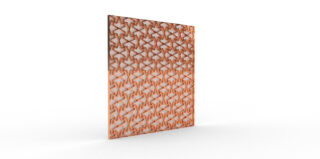
CONCEPT
The aim of the project is to create a solar panel by working with patterns. In fact, to determine the shape of the pattern I was inspired by an Arab mashrabiya, which I then adopted.
TUTORIAL
Base Geometry – Definition of Main Lines

- Begin by creating a rectangle with defined dimensions, which serves as the base shape.
- Then, scale down the original rectangle to generate a smaller one centered within it. The centers of the two shapes are aligned using the Polygon Center component.
- The inner rectangle is rotated as desired to create a more dynamic visual effect.
- Using the Explode, Point on Curve, and Line components, draw inner lines that divide the rectangle into four equal parts.
- These lines are then connected to the vertices of the outer rectangle, forming a radial structure.
Note: To manage the number of lines correctly, the Shortest List component was used to eliminate an extra line during the point connection process.

Adding Thickness – Preparing for Extrusion

- A flat surface is generated from the bounding rectangle and then divided into sub-surfaces, each corresponding to a closed curve (both the internal pattern and outer frame).
- The Offset component is applied to both the internal pattern and the perimeter rectangle.
- The Boundary Surface component is then used to create a single surface that merges all fragments.

Generating the 3D Model

- The Extrude component is applied to the surfaces, both for the internal pattern and (in my case) the entire outer rectangle surface.
- This step transforms the two-dimensional drawing into a three-dimensional model.




